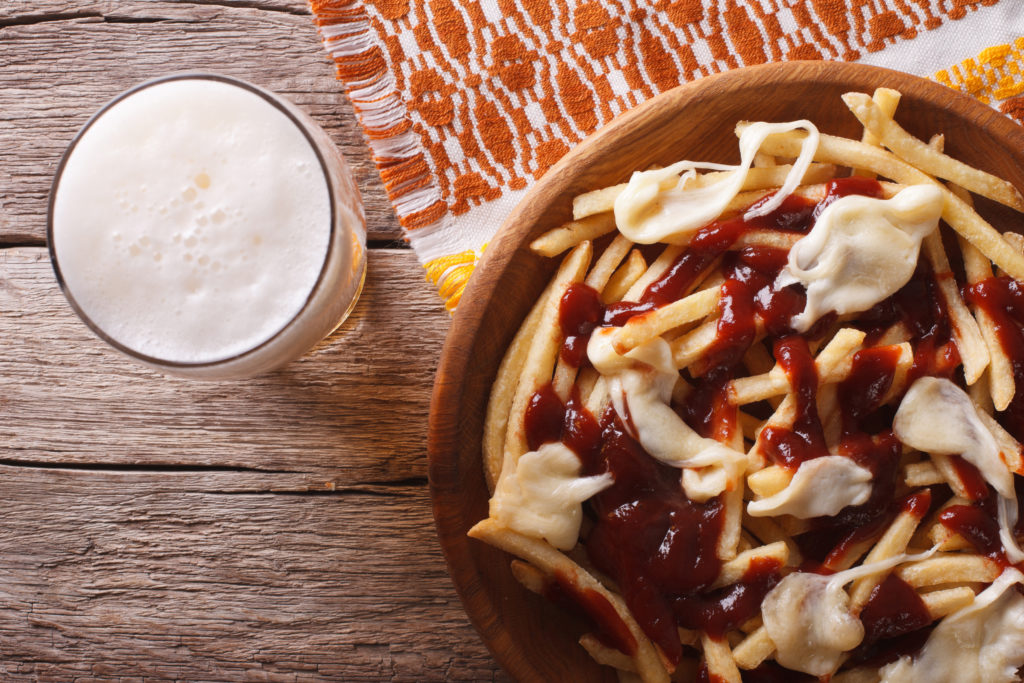Poutine is a comfort food at its heart, a mix of French fries, cheddar cheese curds and gravy that has spread from rural Quebec throughout much of the world since it was invented in the 1950s. While its origins are indisputably that of a diner or greasy spoon, this delicious combination has shown remarkable versatility when adapted for use in higher-end dining.
Students studying for their culinary arts certificate online should keep the following guidance in mind when crafting their own poutine recipe and remember the dish can keep diners happy in a variety of different contexts.
A delicious history
French fries, gravy and cheese curds were all established favorites in Quebec prior to the invention of poutine. Province historians, food researchers and other interested parties conflict over exactly where the dish originated, although all believe it to be in rural Quebec.
The CBC said it originated in Warwick, where a customer ordered cheese curds alongside fries in a take-out bag. The restaurant’s owner replied, using Quebecois slang, that the mix would cause a mess – a “poutine” – and the dish was born, with the gravy coming later. Competing stories place the dish’s origin in similar towns such as Drummondville, where restaurant Le Roy Jucep still promotes itself as the inventor of poutine.
No matter where this comfort food staple was invented, its popularity is undeniable. Its spread through the rest of Canada, the U.S. and many other countries in the decades since is a testament to the widespread appreciation for this combination.

Classic preparations and variations
There’s no singular poutine recipe, as it wasn’t developed by a single chef. Many traditional purveyors have their own versions, and differences of opinion arise over everything from the exact type of gravy to whether the fries should be dropped twice into the fryer. Experiment with various recipes until you find a variation that suits your palate and purposes.
One traditional recipe was offered by Canadian food blog Seasons & Suppers. It features discussions of common substitutions, like which cheese to use when fresh curds aren’t available and the best blend of stocks to craft a great gravy.
The similarly traditional recipe offered by Serious Eats goes a step further by offering contributor Joshua Bousel’s personal specifications for great poutine. This time-intensive approach involves making your own fresh cheese curds – a necessary step for the absolute freshest poutine possible – creating a gravy from scratch and cutting your own French fries. While the complete recipe takes many hours to complete, it includes valuable guidance even if you don’t create your own curds.
Adding more to poutine
Despite the already substantial caloric content of poutine – and the deep, rich flavors that accompany it – many recipes add more to the existing base. Common fast-food and casual-dining variations include meat like bacon or sausage as well as the popular Montreal smoked meat variation. Poutine galvaude combines the chicken and peas of the classic Quebecois hot chicken sandwich with poutine, using a similar gravy as the connecting element. Italian poutine, meanwhile, substitutes Bolognese sauce and, sometimes, Italian sausage for gravy.
In more upscale settings, additions like foie gras, truffles and caviar are sometimes seen. The Globe and Mail said these fine-dining poutines were developed as far back as the late 1990s, with fancier cheeses, more involved sauces and high-end meats all added to the mix.
Poutine, with a few additions or subtractions, is an appetizing dish no matter which type of restaurant it’s served in. Keep the many variations in mind to craft a version that’s perfect for your menu.



